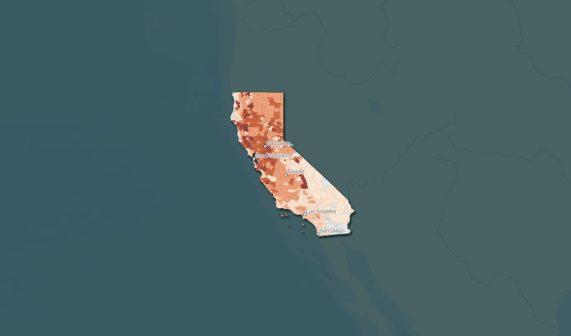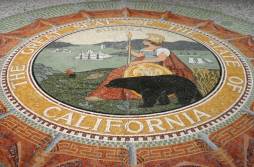Six Californias: State-dividing measure gets signatures to be put on ballot

A venture capitalist’s movement to split California into six states passed a significant milestone Tuesday when supporters submitted the necessary signatures of 1.3 million residents that will qualify the measure for the 2016 statewide ballot.
Tim Draper, a California-based venture capitalist known for investing in companies such as Skype, Overture and Hotmail, wants to slice the nation’s most populous state into new territories, including one for Silicon Valley, to give the residents a larger voice in the U.S. Senate and a government more in tune to their specific needs.
“Californians understand the current structure doesn’t work,” Draper said in a statement. “California, this is your opportunity to get a better government. We understand that kind of change can be hard for people to imagine. We pushed this initiative to November 2016 because wrapping your mind around this kind of fundamental change takes time and it is worth having an extended conversation.”
Draper highlighted a number of ways California has struggled in recent years. In particular, the state has gone from being ranked first nationally in K-12 education to 47th and has 20 percent of its population below the poverty line, a prison population that has quadrupled and a reputation as the worst state in the nation to do business in.
“Six Californias gives us an opportunity to reboot and refresh our state government,” Draper said. “We are ready to create six more responsive, representative governments, more sympathetic governments, more modern governments, more service oriented governments.”
He continued: “Six Californias gives us an opportunity to improve our schools, our roads, our waterways, our business and jobs climate, our prison system and our economy. It gives us the opportunity to live in this glorious state and have great government services too.”
The 1.3 million signatures the movement received is more than enough to get on the 2016 ballot. In filing his measure with the California secretary of state in February, Draper had 150 days to collect the signatures of 807,615 registered voters, which equals 8 percent of the votes cast for governor in the 2010 gubernatorial election.
According to the Wall Street Journal, a statewide poll by the Field Research Corporation last December asking about proposals in certain Northern counties to secede found that only one in four voters backed the idea. Splitting up California would also require U.S. congressional approval.
Steven Maviglio, the former press secretary for Gov. Gray Davis, and Joseph Rodota, the former deputy chief of staff to Gov. Pete Wilson, have formed OneCalifornia to oppose Draper’s effort.
While a vote, let alone the state actually splitting up, is miles away from reality, it does post an interesting thought experiment for technology if the state were to be split apart. When it comes to information technology, would the state continue to act as one entity and keep its current infrastructure in place or break apart and relay on a shared services model?
“This is a colossal and divisive waste of time, energy, and money that will hurt the California brand, our ability to attract business and jobs, and move our state forward together,” Maviglio said in a statement. “It’s unfortunate that Mr. Draper is putting his millions into this effort to split up our state rather than help us face our challenges.”
The measure would break up California to include these regions: “Jefferson” to the north; “North California,” including the state’s current capital, Sacramento; “Central California,” including much of the state’s agricultural valley; “Silicon Valley,” including San Francisco, San Jose and much of the central coastline; “West California,” including Los Angeles; and “South California,” including San Diego and much of the sprawling inland empire east of Southern California’s coastal cities.






